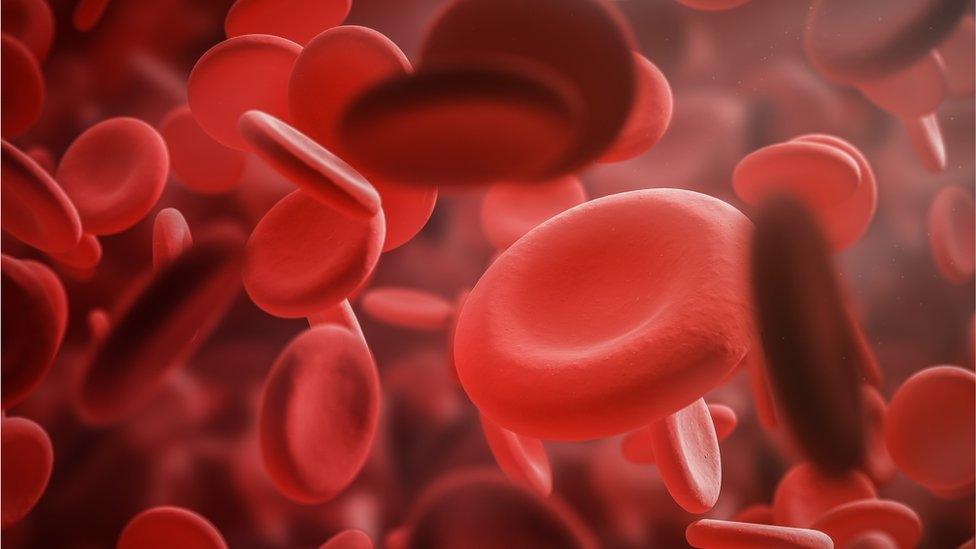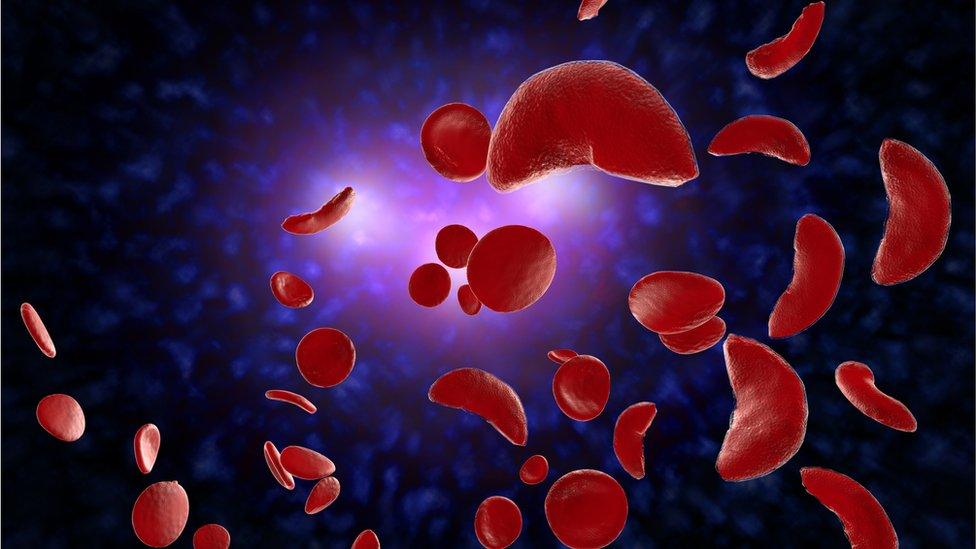Blood: Cells grown in lab given to humans for first time
- Published
- comments

Red bloods cells carry oxygen from our lungs to the rest of our bodies
Scientists in the UK have for the first time ever given blood that has been grown in a laboratory to human volunteers.
Tiny amounts, around a couple of teaspoonfuls, are being tested to see how it performs inside the body.
If successful, it's hoped the process could make it much easier to make blood for people with very rare blood groups - which is usually difficult to get hold of.
It is also hoped it could help those with certain conditions such as sickle cell anaemia, who need regular treatment.
How did scientists grow blood?

The laboratory grown blood is stored in a facility in Bristol
Researchers from Bristol, Cambridge, London and the NHS Blood and Transplant team were all involved in the trial.
They started with a normal human donation of a pint of blood (around 470ml).
Magnetic beads were then used to separate out the stem cells - special cells that can be turned into different types of blood cells.
On average, a drop of blood contains between around 4-5 million red blood cells!
The stem cells were grow in large numbers in the laboratory, before being guided to become red blood cells.
The whole process took about three weeks to complete.
What happens next?
WATCH: The Big Question - Why is blood red?
The first two people have already received tiny amounts of the blood, which scientists say has gone well so far.
The trial now aims to test the blood in at least 10 healthy volunteers.
They will get two donations of around one to two teaspoons of blood, at least four months apart - one of normal blood and one of lab-grown blood.
The lab-grown blood is tagged with a special substance, so scientists can see track it and see how long it lasts in the body.
What could this mean for the future?
More trials are needed first, but it's hoped that in the future laboratory grown blood could provide blood to patients with very rare blood groups.
Professor Ashley Toye from the University of Bristol, said some groups were "really, really rare" that there "might only be 10 people in the country" able to donate.

People with sickle cell disease produce unusually shaped red blood cells that can cause problems
It could also help people with conditions such as sickle cell anaemia, who need regular blood treatment.
Red blood cells normally last for around 120 days before they need to be replaced.
A typical blood donation contains a mix of young and old red blood cells, whereas the lab-grown blood is all freshly made so should last the full 120 days.
Researchers hope this could allow those people to have less frequent treatment in the future.
- Published5 October 2021

- Published29 March 2018

- Published28 March 2018

